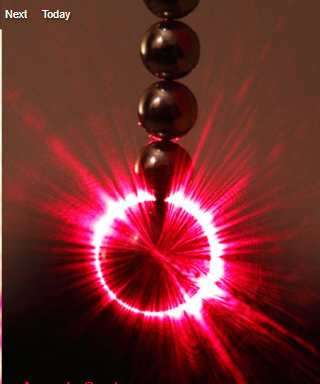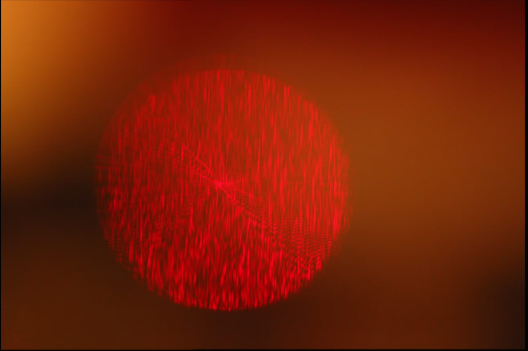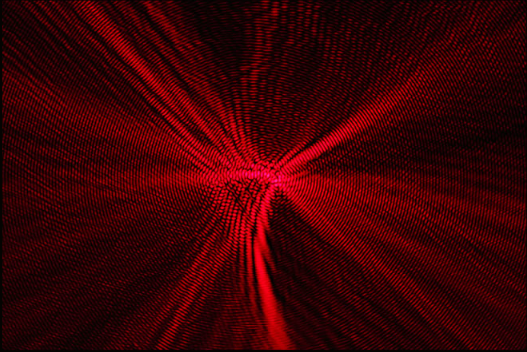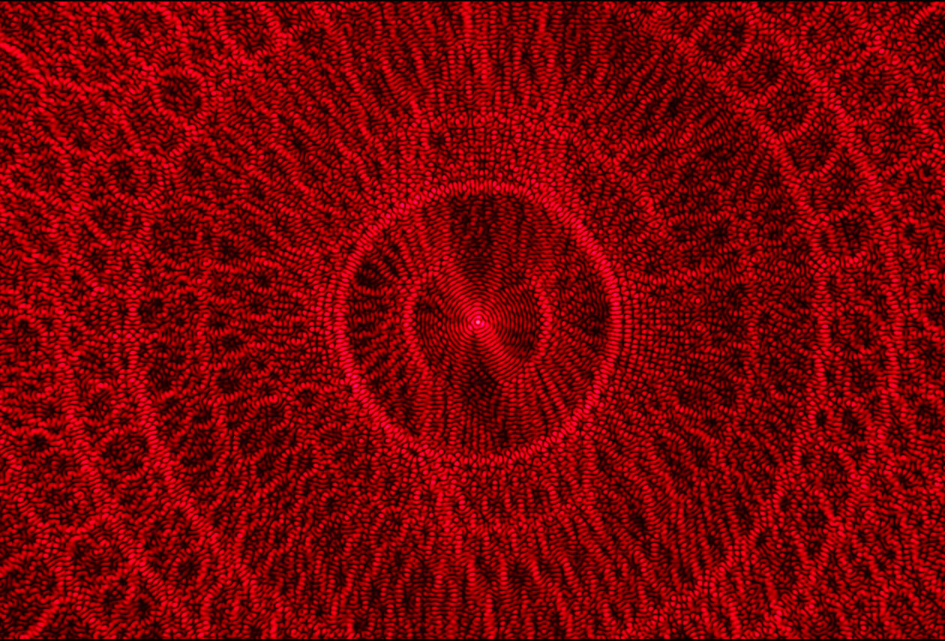Arago's Spot or Fresnel's, or Poisson's - OPOD
Arago's Spot or Fresnel's, or Poisson's: Exploring the Nature of Light
Have you ever wondered if there could be a bright spot at the center of a shadow? It seems counterintuitive, doesn't it? Well, this intriguing phenomenon known as Arago's Spot, or sometimes referred to as Fresnel's or Poisson's Spot, has puzzled scientists for centuries. In this article, we will delve into the experiment that helped decide the nature of light and explore the intricacies of this fascinating optical phenomenon.
Shedding Light on the Experiment
To understand Arago's Spot, let's take a look at an experiment conducted by Michiel de Boer. In his setup, a laser beam shines on a sphere, casting a shadow. Surprisingly, both the sphere and its shadow exhibit a bright spot at their centers. This phenomenon challenges common-sense notions as we would expect the center of a shadow to be completely dark.
The Mathematics Behind the Phenomenon
The presence of Arago's Spot can be explained by the diffraction of light waves around the edge of the sphere. While it takes some complex mathematics to fully grasp the concept, it essentially boils down to the interaction between the waves and the shape of the object. Interestingly, if we were to use Newton's corpuscular theory, which suggests that light consists of tiny particles traveling in straight lines, we would expect a completely dark shadow. However, the diffraction of light waves around the sphere's edge creates a spot in the center of the shadow.
Visualizing Arago's Spot
To better visualize Arago's Spot, Michiel de Boer defocused the camera lens in one of his images, leaving only the diffraction pattern. In the center of this pattern, we can clearly observe the Arago-Fresnel-Poisson spot. Additionally, we can see vertical striations caused by interference patterns from laser light scattered by the material supporting the sphere.
The Complex Nature of the Spot
In a less than perfect world, the structure of Arago's Spot can become quite complex. Irregularities in the laser beam source contribute to the diffraction patterns, adding further intricacy to the phenomenon. Nevertheless, despite these complexities, the presence of the bright spot remains consistent.
A Historical Debate: Corpuscles vs. Waves
The discovery of Arago's Spot played a significant role in settling a long-standing debate about the nature of light. In the 18th century, renowned physicist Isaac Newton proposed that light consisted of tiny corpuscles traveling in straight lines. However, this theory struggled to explain interference fringes and diffraction phenomena. On the other side of the debate was Christiaan Huygens, who proposed that light was composed of longitudinal waves. Huygens' wave theory provided a reasonable explanation for refraction, interference, and diffraction.
The Competition to Settle the Debate
In 1818, the French Academy of Sciences organized a competition to determine whether light was composed of corpuscles or waves. Engineer Augustin Jean Fresnel, known for his work on lighthouse lenses, submitted his wave theory. One of the judges, Siméon Poisson, a strong supporter of Newton's corpuscular theory, sought to find a flaw in Fresnel's paper. To his surprise, while extending Fresnel's analysis, Poisson deduced that wave theory predicted the existence of a spot of light directly behind a lit disk or sphere. This seemingly absurd result led Poisson to believe that wave theory was flawed and unsupported.
Arago's Discovery
Shortly after the competition, Dominique Arago, the head of the judging committee, made a remarkable discovery. He found the elusive Arago's Spot that Fresnel's wave theory had predicted. Arago's discovery provided undeniable evidence in favor of the wave theory of light, solidifying its acceptance in the scientific community.
A Modern Perspective: Particles and Waves
As physics progressed, new perspectives emerged. James Clerk Maxwell's work in 1865 mathematically described electricity and magnetism, leading to the understanding that light was composed of transverse electromagnetic waves. Quantum theory further expanded our understanding by suggesting that particles and waves are two different ways to interpret the behavior of matter and energy. In fact, using an electron microscope adjusted appropriately, we can observe an Arago spot.
Observing Arago's Spot Today
Even today, we can witness Arago's Spot under certain conditions. For example, when using a modern telescope with a central obstruction, a bright star that is well out of focus can produce a large disk of light that reveals the spot. However, it is important to note that the experiment is challenging without lasers, as the occulting disk or sphere must be smooth and round, meeting specific conditions for Fresnel diffraction to occur.
In conclusion, Arago's Spot, also known as Fresnel's or Poisson's Spot, has captivated scientists for centuries. Through experiments and mathematical analysis, we have come to understand this intriguing phenomenon as a result of the diffraction of light waves around the edge of an object. This discovery played a pivotal role in settling the historical debate between corpuscular and wave theories of light. Today, Arago's Spot continues to fascinate researchers and reminds us of the complex nature of light and its behavior.


Arago's Spot or Fresnel's, or Poisson's. Is there a bright spot in the centre of a shadow? An experiment crucis that helped decide the nature of light.
Optics experiments and images by Michiel de Boer (site). Video.
At left a laser beam shines on a sphere. We are in its shadow looking towards the laser. The sphere�s dark side has a bright spot at its centre. In the above right image a steel sphere is held up by magnetic beads. That too has a bright spot on its dark side.
At least one eminent French academician said it should not exist. Common-sense says it is absurd. How can a bright spot exist in the centre of a shadow?
All images ©Michiel de Boer, shown with permission

The experiment at its very simplest.
Light waves diffract around the sphere's edge. It takes some complex maths to show that a spot forms.
Newton's corpuscles would leave a completely dark shadow..

Michiel de Boer has kept the camera lens for this image but on an extension tube to grossly defocus the sphere itself to leave the diffraction pattern only.
In the centre is the Arago-Fresnel-Poisson spot.
The vertical striations are interference patterns from laser light scattered by the sphere support material.
I

The sphere's dark side. The rim shines brightly by diffracted light.

The spot structure in a less than perfect world is complex.
Irregularities in the laser beam source also contribute to the diffraction patterns.

In science, as in other activities, eminence and authority can carry great weight.
Isaac Newton in his landmark book �Opticks� of 1704 proposed that light was tiny corpuscles travelling in straight lines. Newton hesitated over the decision. It struggled to explain already known interference fringes or diffraction. And across the North Sea was the scientific giant, Christiaan Huygens. He had in 1678 already published a rival theory that light was longitudinal waves (like sound). Huygens provided a reasonable explanation of refraction, interference and diffraction. Nonetheless, and in spite of mounting evidence, Newton's corpuscular theory held sway for the next hundred years and more.
It came to a competition. In 1818 the French Academy of Sciences launched one to settle the question - was light corpuscles or waves?
Engineer Augustin Jean Fresnel (lighthouse lenses) submitted his wave theory. A brilliant scientist, Sim�on Poisson was one of the judges. He was also an ardent supporter of corpuscular theory. He sought a flaw in Fresnels's paper. He extended Fresnel's analysis and deduced that wave theory predicted a spot of light directly behind a lit disk or sphere. An impossible and absurd result! The spot was not visible and that was the end of wave theory.
Too clever! Shortly afterwards Dominique Arago, head of the judging committee, found the spot.
To be fair to Poissan, the experiment without lasers. is very difficult. Also, the occulting disk or sphere must be very smooth and round (witness the irregularities in the images here). Its placement must meet certain conditions for Fresnel diffraction to hold.
Physics advances come from unexpected quarters. Using Michael Faraday's experimental findings, James Clerk Maxwell in 1865 developed an elegant mathematical description of electricity and magnetism. His concise set of equations showed that light was transverse electromagnetc waves.
Quantum theory added another perspective. Depending on circumstances, we might interpret the world as particles or waves. An electron microscope suitably adjusted will show a very nice Arago spot!
. A star is another source of parallel light and under very steady conditions a modern telescope with a central obstruction can show the spot if a bright star is racked well out of focus into a large disk of light.
Note: this article has been automatically converted from the old site and may not appear as intended. You can find the original article here.
Reference Atmospheric Optics
If you use any of the definitions, information, or data presented on Atmospheric Optics, please copy the link or reference below to properly credit us as the reference source. Thank you!
-
<a href="https://atoptics.co.uk/blog/aragos-spot-or-fresnels-or-poissons-opod/">Arago's Spot or Fresnel's, or Poisson's - OPOD</a>
-
"Arago's Spot or Fresnel's, or Poisson's - OPOD". Atmospheric Optics. Accessed on April 17, 2024. https://atoptics.co.uk/blog/aragos-spot-or-fresnels-or-poissons-opod/.
-
"Arago's Spot or Fresnel's, or Poisson's - OPOD". Atmospheric Optics, https://atoptics.co.uk/blog/aragos-spot-or-fresnels-or-poissons-opod/. Accessed 17 April, 2024
-
Arago's Spot or Fresnel's, or Poisson's - OPOD. Atmospheric Optics. Retrieved from https://atoptics.co.uk/blog/aragos-spot-or-fresnels-or-poissons-opod/.